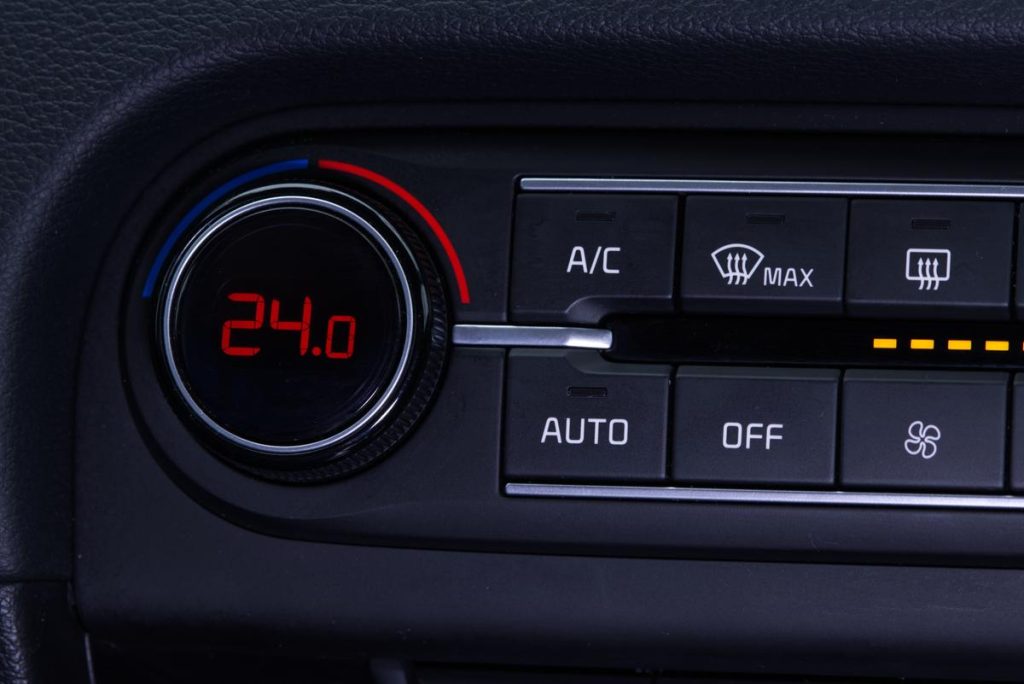In today’s world, an electric car is no longer just a fancy gadget; it’s a step towards creating a sustainable future. As people are becoming more environmentally conscious, electric cars are gaining popularity worldwide. However, as with every new technology, questions always arise, and one of the most commonly asked is about their idling time with the heat on. Why is this significant? Well, imagine being stranded in traffic with your electric car in the dead of winter, and you don’t know how long you can keep the heat on before your battery dies. That is where we come in.
In this blog post, I will explore how long an electric car can idle with the heat on and answer all your burning questions. So sit back, grab a cup of coffee, and let’s dive in!
How Long Can An Electric Car Idle With Heat On?
The amount of time an electric car can idle with the heat on depends on several factors, including the battery capacity, outside temperature, and the efficiency of the heating system. Let’s examine each of these factors:
Battery Capacity:
The battery capacity determines the amount of energy stored in the electric car. The larger the battery capacity, the longer the car can idle. Electric cars typically have a range of anywhere from 100 to 400 miles (160 to 640 kilometers) on a full charge, depending on the model. However, remember that using the heat will consume energy from the battery, reducing the overall range.
Outside Temperature:
Cold weather affects the range of an electric car because it requires more energy to heat the cabin and maintain the battery’s optimal temperature. In icy conditions, the content can be significantly reduced. The duration an electric car can idle with the heat on will be shorter in colder temperatures compared to milder ones.
Heating System Efficiency:
The efficiency of the heating system in an electric car can vary between different models. Some cars may have more energy-efficient heating systems, while others may consume more power. The more efficient the heating system, the longer the car can idle with the heat on.
How Does an Electric Car’s Engine Work?
Electric cars do not have traditional internal combustion engines like gasoline or diesel-powered vehicles. Instead, they utilize an electric motor or multiple electric motors to generate propulsion. Here I simplified an explanation of how an electric car’s engine works:
Electric Motor:
The heart of an electric car is its electric motor. The motor is powered by electricity from the car’s battery pack. When the driver engages the accelerator pedal, it sends a signal to the motor controller, which regulates the power flow from the battery to the motor.
Battery Pack:
Electric cars are equipped with a large battery pack composed of multiple individual battery cells. These batteries store electrical energy in the form of chemical energy. The battery pack is usually located on the floor of the car for optimal weight distribution.
Power Conversion:
The electrical energy stored in the battery pack is converted to mechanical energy by the electric motor. The motor controller regulates the flow of electricity from the battery pack to the motor, adjusting the motor’s speed and torque based on the driver’s input.
Transmission:
Electric cars typically have a single-speed transmission or a direct drive system, which means there is no need for a multi-gear transmission like in conventional vehicles. The electric motor delivers power directly to the wheels, allowing for smooth and efficient acceleration.
Regenerative Braking:
Electric cars often feature regenerative braking systems. When the driver applies the brakes, the electric motor switches to generator mode, converting kinetic energy back into electrical energy. This energy is then sent back to the battery pack for storage, helping to extend the car’s range.
Charging:
To power an electric car, the battery pack needs to be charged. This can be done by connecting the car to a charging station or using a regular household power outlet. The charging process replenishes the energy stored in the battery pack, allowing the car to operate.
How long can you run the heat in an electric car?

The length of time you can run the heater in an electric car depends on several factors, such as the battery capacity of the car, the outside temperature, and the level of heating required.
For example, if you had a Tesla Model 3 with a battery capacity of 50 kWh and were driving in cold weather conditions where the temperature outside is -10°C, running the heater would consume approximately 4 kWh per hour. Therefore, you would be able to run the heater for around 12.5 hours before depleting the entire battery.
It goes for all-electric cars. You can simply estimate the average time for all-electric cars by their battery capacity.
How long can an electric car idle in cold weather?

The duration an electric car can idle in cold weather without being driven is dependent on several factors, including the battery capacity, the outside temperature, the efficiency of the car’s heating system, and the energy-saving features of the vehicle.
When an electric car is idling in cold weather, the battery is still being used to power various systems, such as the heating system, lights, and electronics. The cold temperature itself can also have an impact on the battery’s performance and overall range.
The exact time an electric car can idle in cold weather varies among different car models, as they have different battery sizes and energy consumption rates. On average, an electric car can idle for a few hours in cold weather, but this is a rough estimate and can vary significantly.
To extend the idling duration in cold weather, some electric cars offer energy-saving features like a low-power mode or a pre-conditioning system. These features allow you to warm up the car’s interior while it is still connected to a power source, reducing the reliance on battery power while idling. By pre-conditioning the car, you can ensure a comfortable temperature inside while preserving the battery capacity for driving.
Does heat affect electric cars?
Yes, heat can affect electric cars, just like any other vehicle. High temperatures can impact various components of an electric car, including the battery, electronics, and overall performance. Here are a few ways in which heat can affect electric cars:
Battery Performance:
High temperatures can negatively affect the performance and longevity of the battery pack in an electric car. Heat can accelerate chemical reactions within the battery, leading to faster degradation and reduced overall capacity. It’s important to note that most electric cars have built-in battery management systems that help regulate temperature and mitigate the impact of heat on the battery.
Charging Efficiency:
Charging an electric car in high temperatures can affect charging efficiency. The battery’s internal resistance increases as the temperature rises, which can lead to slower charging speeds and reduced energy transfer efficiency. Some charging stations and electric car models have thermal management systems to regulate the battery temperature during charging and maintain optimal performance.
Cabin Cooling:
Just like traditional cars, electric cars cool their cabin during hot weather. Using the air conditioning system in an electric car requires need energy from the battery, which can impact the driving range. However, newer electric vehicles are designed to optimize energy consumption and minimize the impact on the overall range.
Electronics and Motor:
Excessive heat can also impact the performance and reliability of electronic components and the electric motor in an electric car. Overheating can lead to reduced efficiency, increased wear and tear, and potential malfunctions. Electric cars are equipped with cooling systems to regulate the temperature of these critical components and maintain optimal performance.
Electric vs Gasoline Cars: Which Is Better?
When comparing electric cars and gasoline cars, it’s important to consider various factors to determine which option is better for you. Let’s take a closer look at both types of vehicles.
Electric cars have several advantages. First and foremost, they are more environmentally friendly since they produce zero tailpipe emissions. This means they don’t contribute to air pollution and can help reduce greenhouse gas emissions, primarily if the electricity used to charge them comes from renewable sources.
Additionally, electric cars tend to be more energy-efficient than gasoline cars. They convert a higher percentage of energy from the grid into actual movement, making them more efficient overall. This efficiency can translate into lower fuel costs, especially when compared to gasoline prices which can fluctuate.
Electric cars also have fewer moving parts, which means they generally require less maintenance. With no oil changes or spark plug replacements, maintenance costs can be lower in the long run. Furthermore, electric motors tend to be quieter and provide instant torque, resulting in a smoother and more responsive driving experience.
However, there are some considerations to keep in mind. One of the most significant factors is the range or how far you can drive on a single charge. Although the electric vehicle range has improved, it can still be limited compared to gasoline cars. Longer trips may require more planning and charging stops, which can be inconvenient if there are limited charging stations available.
FAQs
1. How long can I run the heater in my electric car?
The runtime of the heater in an electric car depends on several factors, including the capacity of the vehicle’s battery, the efficiency of the heating system, and the outside temperature. Running the heater consumes energy from the battery, which can reduce the available driving range
2. How long will the EV battery last with the heater on?
Using the heater in an electric vehicle (EV) will impact the battery life and reduce the driving range. Heating requires energy, and the EV’s battery powers both the heater and the propulsion of the vehicle. The exact impact on battery life will depend on factors such as the outside temperature, the desired interior temperature, and the efficiency of the heating system. In colder temperatures, where more energy is required to warm up the cabin, the battery will deplete faster compared to milder conditions.
3. How long can you sit idle in an electric car?
The idle time of an electric car depends on its battery capacity and the power consumption of the vehicle while idle. When an electric car is idle, it still consumes a small amount of power to maintain systems like lights, infotainment, and various electrical components. Additionally, extreme temperatures (both hot and cold) can impact the battery’s performance and energy loss.
4. How long can a Tesla idle with the heat on?
The idle time of a Tesla with the heat on will depend on various factors, including the battery capacity, outside temperature, desired interior temperature, and the heating system’s efficiency. Tesla vehicles typically have larger battery capacities compared to many other electric cars, which can provide a longer idle time. However, it’s important to note that running the heater will consume energy from the battery, reducing the available charge. In colder temperatures, the battery may deplete faster due to the increased energy demand for heating.